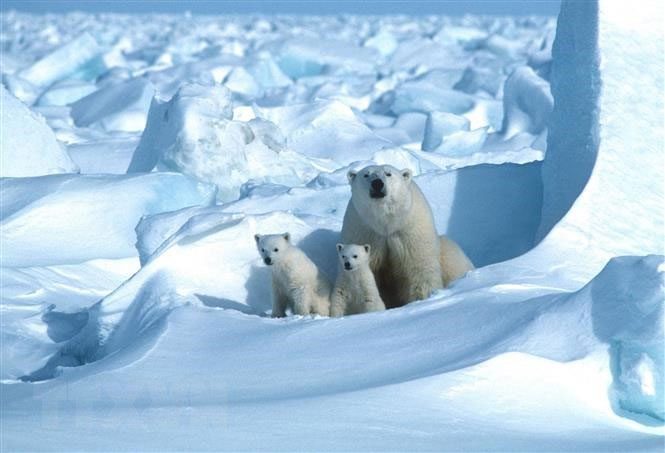Researchers have discovered a new dynamical mechanism behind the deep warming phenomenon in the polar regions, linked to the decline of sea ice in the Arctic.

Arctic Polar Bear. (Photo: AFP/TTXVN)
New scientific evidence indicates a correlation between extreme cold weather events in the mid-latitudes of the Northern Hemisphere and the decrease in Arctic sea ice.
This is the result of a collaborative study by a team of international scientists recently published in the journal “Npj Climate and Atmospheric Science”.
For decades, densely populated areas in the mid-latitudes of the Northern Hemisphere have frequently experienced extreme cold weather phenomena, resulting in numerous casualties and significant economic damage.
Previous studies have indicated that one of the causes of this phenomenon is the dramatic reduction in Arctic sea ice, though the correlation has yet to be clearly established.
The team of scientists, led by Professor Tian Wenshou from Lanzhou University, along with several international researchers, conducted a joint study on this issue.
Utilizing reanalysis results and model simulations, the researchers uncovered a new dynamical mechanism behind the deep warming phenomenon in the polar regions associated with the decline of Arctic sea ice.
The study confirms the essential role of the interaction between the stratosphere and the troposphere in the deep warming of the Arctic due to decreasing sea ice.
According to Professor Tian Wenshou, the research highlights the significant impact of the stratosphere on the warming of the Arctic.
Therefore, this new study is likely to aid short-term forecasting models regarding future extreme cold weather phenomena.


















































